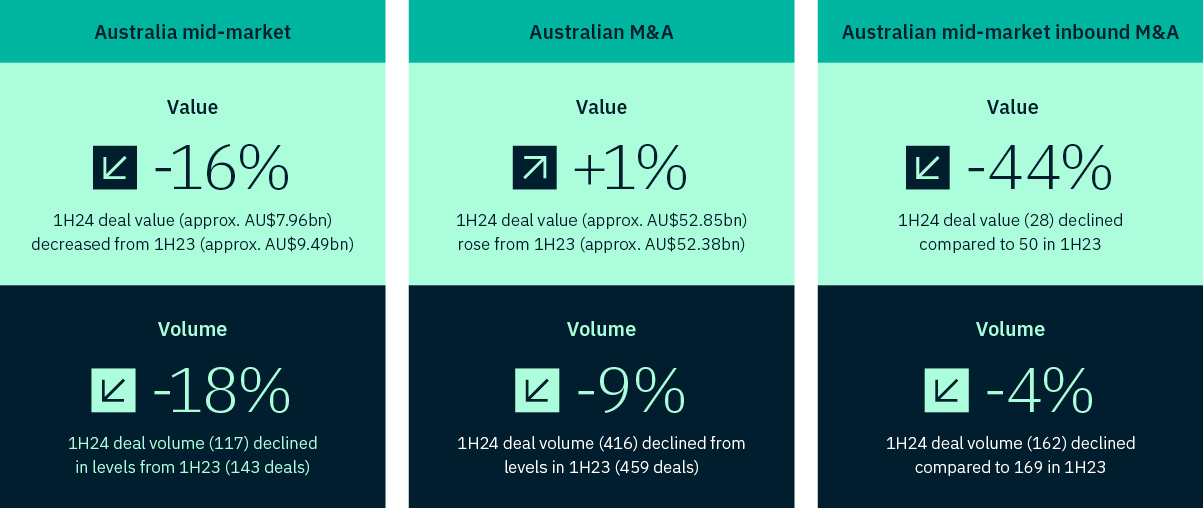Mid-year report 2024
DealmakersMid-market M&A in Australia


Contents
Australian M&A in 1H24 remains cautiously strategic, as dealmakers focus on long-term value creation.
Earlier this year, our annual Dealmakers report found that 70% of respondents were planning to increase their M&A activities in Australia in 2024. Another 85% said that M&A conditions would improve, paving the way for greater deal volumes.
But sentiment and action are at odds, with dealmakers ultimately taking a cautious approach to M&A activity – however some bright spots, such as offshore buyer interest and steadying deal values and valuations, leave cautious optimism for the second half of the year.
Dealmaking in Australia: 1H24 in numbers

So what does the rest of the year look like for Australian dealmakers? Dive into our full mid-year report to understand:
- Factors influencing future dealmaking, and how the mid-market can appeal to risk-averse dealmakers
- Inbound M&A trends and their impact on the Australian dealmaking landscape
- What’s driving activity in the top sectors – in the mid-market and Australia more broadly
Access the Dealmakers 2024 mid-year report
Want to access our full report?
Enter your details below to have it sent straight to your inbox


Access the Dealmakers 2024 mid-year report
By clicking submit you agree to Pitcher Partners sharing news and insights with you.
Read the February Dealmakers report
Our experts









